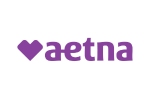Will health insurance cover Tauvid?
Discover the latest insights on whether health insurance will cover Tauvid, a groundbreaking diagnostic tool for Alzheimer's disease. Find out how this innovative technology could revolutionize early detection and treatment options. Stay informed and make informed decisions about your healthcare.
Read more Secured with SHA-256 Encryption






Find the Lowest Car Insurance Rates Today
Quote’s drivers have found rates as low as $42/month in the last few days!




Table of Contents
Table of Contents


Insurance Content Managing Editor
Daniel S. Young began his professional career as chief editor of The Chanticleer, a Jacksonville State University newspaper. He also contributed to The Anniston Star, a local newspaper in Alabama. Daniel holds a BA in Communication and is pursuing an MA in Journalism & Media Studies at the University of Alabama. With a strong desire to help others protect their investments, Daniel has writt...
Daniel S. Young


Licensed Insurance Producer
Dani Best has been a licensed insurance producer for nearly 10 years. Dani began her insurance career in a sales role with State Farm in 2014. During her time in sales, she graduated with her Bachelors in Psychology from Capella University and is currently earning her Masters in Marriage and Family Therapy. Since 2014, Dani has held and maintains licenses in Life, Disability, Property, and Casualt...
Dani Best
Updated January 2025
In recent years, there has been growing interest in a new medical breakthrough called Tauvid. This innovative diagnostic tool has the potential to revolutionize the way we diagnose and treat various neurological conditions, particularly Alzheimer’s disease. However, as with any new medical advancement, questions arise about its accessibility and affordability. In this article, we will explore whether health insurance covers Tauvid and what factors may influence insurance coverage for this groundbreaking technique.
Understanding Tauvid: What is it and How Does it Work?
Tauvid is a radioactive diagnostic agent that helps doctors detect abnormal tau protein deposits in the brain. These deposits are often found in individuals with neurological disorders like Alzheimer’s disease. By using Tauvid, physicians can accurately identify and diagnose these conditions, allowing for earlier intervention and more targeted treatment options.
The Science Behind Tauvid
The development of Tauvid is rooted in the understanding of the role of tau protein in neurodegenerative diseases. Tau proteins stabilize the structure of our brain cells and facilitate normal cell functions. However, in conditions such as Alzheimer’s disease, these proteins become tangled and misfolded, leading to the formation of toxic tau aggregates.
Researchers have long been studying the mechanisms behind tau protein aggregation and its correlation with neurodegenerative diseases. Through extensive laboratory experiments and clinical studies, scientists have discovered that the abnormal tau aggregates contribute to the progressive destruction of brain cells, resulting in cognitive decline and memory loss.
Tauvid, with its radioactive properties, plays a crucial role in visualizing these abnormal tau aggregates. When administered to patients, Tauvid selectively binds to the toxic tau aggregates, emitting a radioactive signal that can be detected through imaging techniques such as positron emission tomography (PET).
During a PET scan, the patient lies on a table that slides into a cylindrical machine. This machine contains detectors that can sense the radioactive signals emitted by Tauvid. The data collected from the PET scan is then processed by sophisticated computer algorithms to generate detailed images of the brain, highlighting the areas with abnormal tau protein deposits.
The Use of Tauvid in Medical Practice
Tauvid has gained significant attention due to its potential to improve diagnostic accuracy for Alzheimer’s disease. With more accurate diagnoses, doctors can provide patients with a targeted treatment plan and help manage symptoms more effectively.
Furthermore, Tauvid’s role extends beyond diagnosis. In clinical research settings, Tauvid is being utilized to track disease progression and evaluate the effectiveness of potential therapies. By monitoring changes in tau protein deposits over time, researchers can gain valuable insights into the development and progression of neurodegenerative diseases, paving the way for future advancements in treatment strategies.
Additionally, Tauvid’s use in clinical trials allows researchers to assess the efficacy of experimental drugs designed to target and reduce tau protein aggregates. These trials provide valuable data that can contribute to the development of new therapeutic options for individuals suffering from Alzheimer’s disease and other tauopathies.
In conclusion, Tauvid is a groundbreaking diagnostic agent that enables physicians to detect abnormal tau protein deposits in the brain. Through its ability to bind to toxic tau aggregates and emit a radioactive signal, Tauvid plays a vital role in the accurate diagnosis and monitoring of neurodegenerative diseases. As research in this field continues to evolve, Tauvid holds immense promise in improving patient outcomes and advancing our understanding of these debilitating conditions.
Free Health Insurance Comparison
Compare Quotes From Top Companies and Save
Secured with SHA-256 Encryption
The Cost of Tauvid
While Tauvid offers promising benefits to patients and healthcare providers, its cost is an important consideration. The price of Tauvid can vary depending on several factors.
When it comes to the pricing of Tauvid, there are several factors that contribute to its cost. One of the primary factors is the extensive research and development that goes into creating this innovative diagnostic agent. Scientists and researchers spend countless hours studying and analyzing the tau protein, which plays a crucial role in the development of Alzheimer’s disease. The knowledge gained from these studies is then used to develop Tauvid, a cutting-edge technology that can accurately detect and visualize tau pathology in the brain.
In addition to the research and development costs, manufacturing expenses also play a significant role in determining the price of Tauvid. The production of this diagnostic agent requires state-of-the-art facilities and equipment, as well as highly skilled technicians who can ensure its quality and consistency. These factors contribute to the overall cost of manufacturing Tauvid.
Regulatory requirements are another factor that influences the pricing of Tauvid. Before any new medical product can be brought to market, it must undergo rigorous testing and obtain regulatory approvals. This process involves extensive clinical trials and evaluations to ensure the safety and efficacy of the product. The costs associated with obtaining these approvals and complying with regulatory standards can impact the final price of Tauvid.
Market demand also plays a role in determining the cost of Tauvid. As a cutting-edge diagnostic agent, Tauvid offers a unique and valuable tool for healthcare providers in the diagnosis and management of Alzheimer’s disease. The potential demand for this innovative technology can influence its price, as manufacturers take into account the market dynamics and competition.
Pricing Factors for Tauvid
Several factors contribute to the pricing of Tauvid. These can include research and development costs, manufacturing expenses, regulatory requirements, and the potential for market demand. As a cutting-edge technology, Tauvid’s pricing may reflect the significant investment required to bring this diagnostic agent to market.
It is important to note that the cost of Tauvid may vary depending on the region and healthcare system. Different countries may have different pricing structures and reimbursement policies, which can impact the accessibility of Tauvid to patients.
Comparing Tauvid’s Cost to Similar Treatments
When considering the affordability of Tauvid, it is crucial to compare its cost to similar diagnostic techniques and treatments. While Tauvid may have a higher price tag compared to standard diagnostic procedures, the potential benefits it offers in terms of accurate diagnoses and personalized treatment plans may outweigh the initial financial investment.
Traditional diagnostic techniques for Alzheimer’s disease, such as brain imaging scans and cognitive assessments, may provide valuable information but often lack the specificity and sensitivity offered by Tauvid. By accurately visualizing tau pathology in the brain, Tauvid can help healthcare providers make more informed decisions regarding patient care and treatment strategies.
Furthermore, the cost of misdiagnosis or delayed diagnosis can be significant in terms of both financial and emotional burden. Inaccurate diagnoses can lead to inappropriate treatments, unnecessary procedures, and prolonged suffering for patients. By investing in Tauvid, healthcare providers can potentially minimize these risks and provide more targeted and effective care.
It is also important to consider the long-term cost savings that may be associated with Tauvid. By enabling early and accurate diagnosis, Tauvid can help identify patients who are at a high risk of developing Alzheimer’s disease. This early identification can allow for timely interventions and personalized treatment plans, potentially slowing down the progression of the disease and reducing the overall healthcare costs associated with Alzheimer’s care.
In conclusion, while the cost of Tauvid may be a significant consideration, it is crucial to evaluate its pricing in the context of the extensive research and development, manufacturing expenses, regulatory requirements, and market demand. By comparing Tauvid’s cost to similar diagnostic techniques and considering the potential benefits it offers, healthcare providers can make informed decisions regarding its affordability and value in the diagnosis and management of Alzheimer’s disease.
Health Insurance and Tauvid
One of the main concerns for individuals considering Tauvid is whether health insurance plans will cover the cost of this innovative diagnostic tool. Understanding how health insurance coverage works for Tauvid can provide valuable insights for patients and healthcare professionals.
Typical Health Insurance Coverage for Tauvid
The coverage of Tauvid by health insurance plans can vary. Some insurance providers may consider it an approved diagnostic tool, while others may classify it as an investigational procedure. To determine coverage, individuals should review their insurance policy or consult with their insurance provider directly.
Factors Influencing Insurance Coverage for Tauvid
Several factors may influence insurance coverage for Tauvid. These can include the individual’s specific insurance plan, their medical condition, the overall cost-effectiveness of the procedure, and the available clinical evidence supporting its use. It is essential to communicate with insurance providers and obtain any necessary pre-authorization to ensure coverage for Tauvid.
Case Studies: Patients and Tauvid Coverage
Examining real-life case studies can provide insights into the experiences of patients seeking insurance coverage for Tauvid.
Success Stories: When Insurance Covered Tauvid
There have been cases where insurance plans have covered the cost of Tauvid. These success stories demonstrate that, with proper communication and documentation, patients can navigate the insurance landscape and receive the benefits of this groundbreaking diagnostic tool.
Challenges: When Insurance Did Not Cover Tauvid
In some instances, insurance companies may deny coverage for Tauvid. This can present challenges for patients who believe they could benefit from this advanced diagnostic technique. By understanding the processes and requirements of their insurance providers, patients can proactively advocate for their coverage rights.
Free Health Insurance Comparison
Compare Quotes From Top Companies and Save
Secured with SHA-256 Encryption
How to Advocate for Insurance Coverage of Tauvid
For patients willing to pursue insurance coverage for Tauvid, employing effective advocacy strategies can make a significant difference.
Understanding Your Health Insurance Policy
Thoroughly reviewing the health insurance policy is vital for understanding the covered services, exclusions, and limitations related to diagnostic tools like Tauvid. By familiarizing themselves with their policy, patients can better articulate their needs and make stronger appeals for coverage.
Communicating with Your Insurance Provider
Clear and concise communication with insurance providers is key to advocating for Tauvid coverage. Patients should collaborate with their healthcare team to gather necessary documentation, such as medical records, test results, and supporting research, to present a compelling case for insurance coverage.
Seeking Assistance from Patient Advocacy Groups
Patient advocacy groups can provide valuable guidance and support to individuals seeking insurance coverage for Tauvid. These organizations can help navigate the complex insurance process and offer resources for honing advocacy skills.
Ultimately, the question of whether health insurance will cover Tauvid is not straightforward. Coverage depends on several factors, including insurance plan specifics and medical necessity. By understanding the science behind Tauvid, comparing its cost to similar treatments, and actively advocating for insurance coverage, individuals can position themselves for increased access to this cutting-edge diagnostic tool. As more evidence emerges about the benefits of Tauvid, one hopes that insurance coverage will become more widespread, enabling more patients to benefit from this groundbreaking technology.
Frequently Asked Questions
Will health insurance cover the cost of Tauvid?
Health insurance coverage for Tauvid may vary depending on the specific insurance plan. It is recommended to contact your insurance provider to determine if Tauvid is covered under your policy.
What is Tauvid?
Tauvid is a radioactive diagnostic agent used in positron emission tomography (PET) imaging of the brain. It is specifically used to help detect the presence of tau pathology in adult patients being evaluated for Alzheimer’s disease.
How does Tauvid work?
Tauvid works by binding to abnormal tau protein aggregates in the brain, which are associated with Alzheimer’s disease. This allows healthcare professionals to visualize and assess the extent of tau pathology through PET imaging.
Who is Tauvid recommended for?
Tauvid is recommended for adult patients who are being evaluated for Alzheimer’s disease and whose doctors suspect the presence of tau pathology in the brain. It is not intended for use in pediatric patients.
What are the potential side effects of Tauvid?
Common side effects of Tauvid may include headache, injection site pain, and increased blood pressure. It is important to discuss any potential side effects with your healthcare provider before undergoing the procedure.
Where can I find more information about Tauvid?
For more information about Tauvid, including its usage, safety, and potential benefits, it is recommended to consult the prescribing information, speak with your healthcare provider, or visit the official website of the manufacturer.
Get a FREE Quote in Minutes
Insurance rates change constantly — we help you stay ahead by making it easy to compare top options and save.

